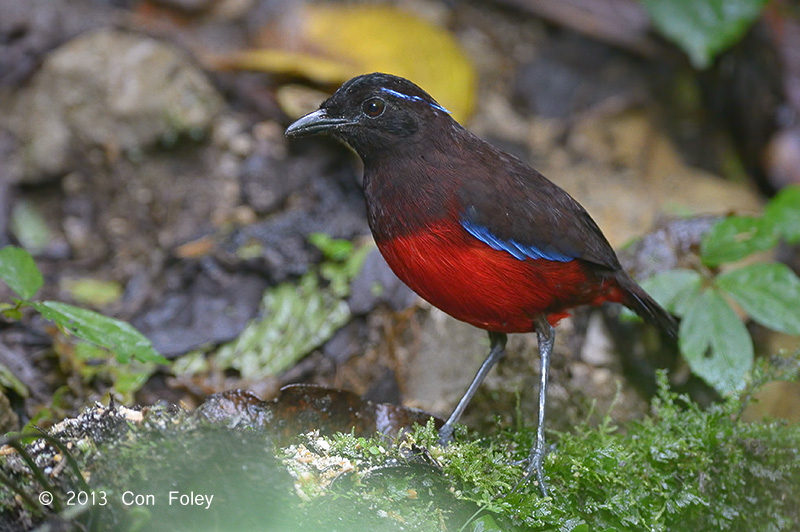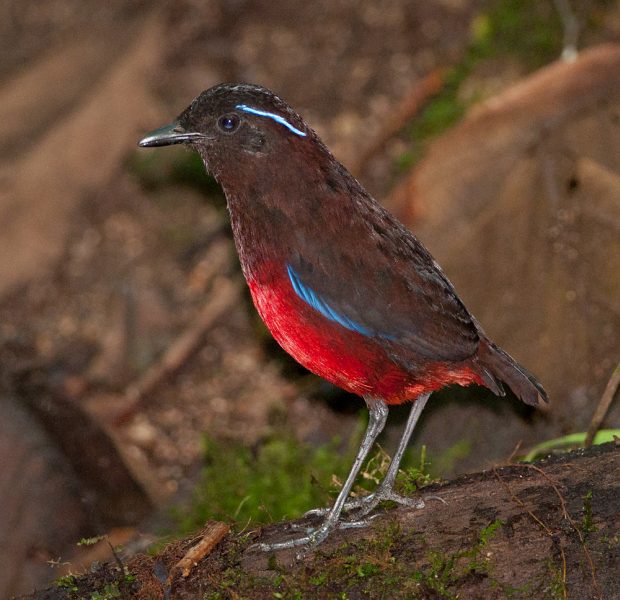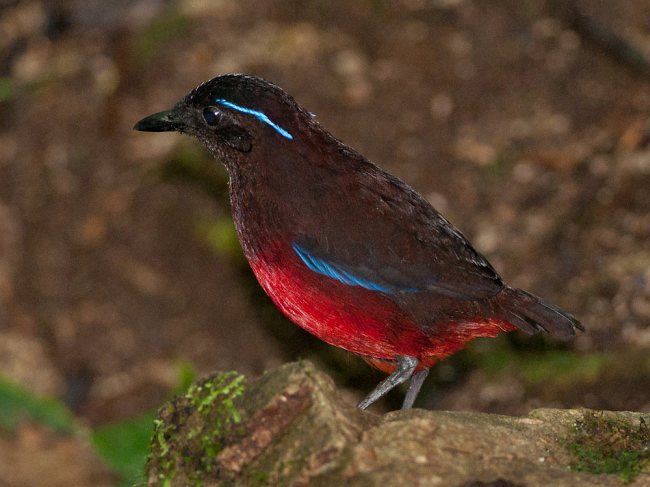
Pitta venusta
TAXONOMY
Pitta venusta S. Mьller, 1835, Sumatra.
OTHER COMMON NAMES
English: Black-and-scarlet pitta, black-crowned pitta; French:
Brиve gacieuse; German: Granatpitta; Spanish: Pita de Corona
Negra.
PHYSICAL CHARACTERISTICS
5.7–7.3 in (14.5–18.5 cm); weight unrecorded. Black head with
light blue feather behind eye. Black breast and red underparts.
Deep red back and black wings.
DISTRIBUTION
Western Sumatra.
HABITAT
Understory and lower levels of forest, especially in most
ravines; 1,300–4,600 ft (400–1,400 m).
BEHAVIOR
Terrestrial and secretive, occurring alone or in pairs.
FEEDING ECOLOGY AND DIET
Diet includes insects, snails, seeds, and worms.
REPRODUCTIVE BIOLOGY
Probably breeds February to June. A single nest was domeshaped;
constructed from roots, leaves (including bamboo), and
soft, rotting material. Clutch size two to three. Eggs described
as pure white or dull cream with buffish and brown spots and
lines over gray-lilac markings. Markings are evenly distributed
over the egg.
CONSERVATION STATUS
Considered Vulnerable as of 2000. Its small population may be
decreasing due to deforestation and habitat loss.
SIGNIFICANCE TO HUMANS
None known.
Other popular Animals
Photo Gallery of - Graceful pitta




 Animalia Life
Animalia Life